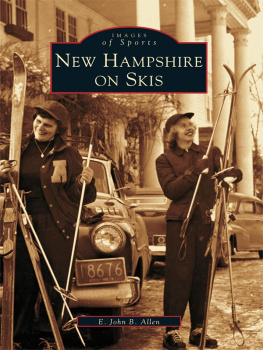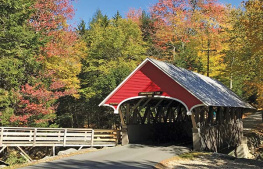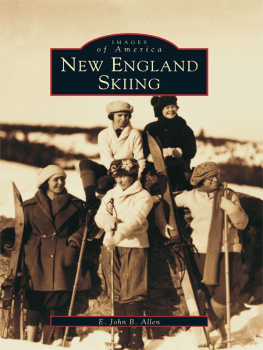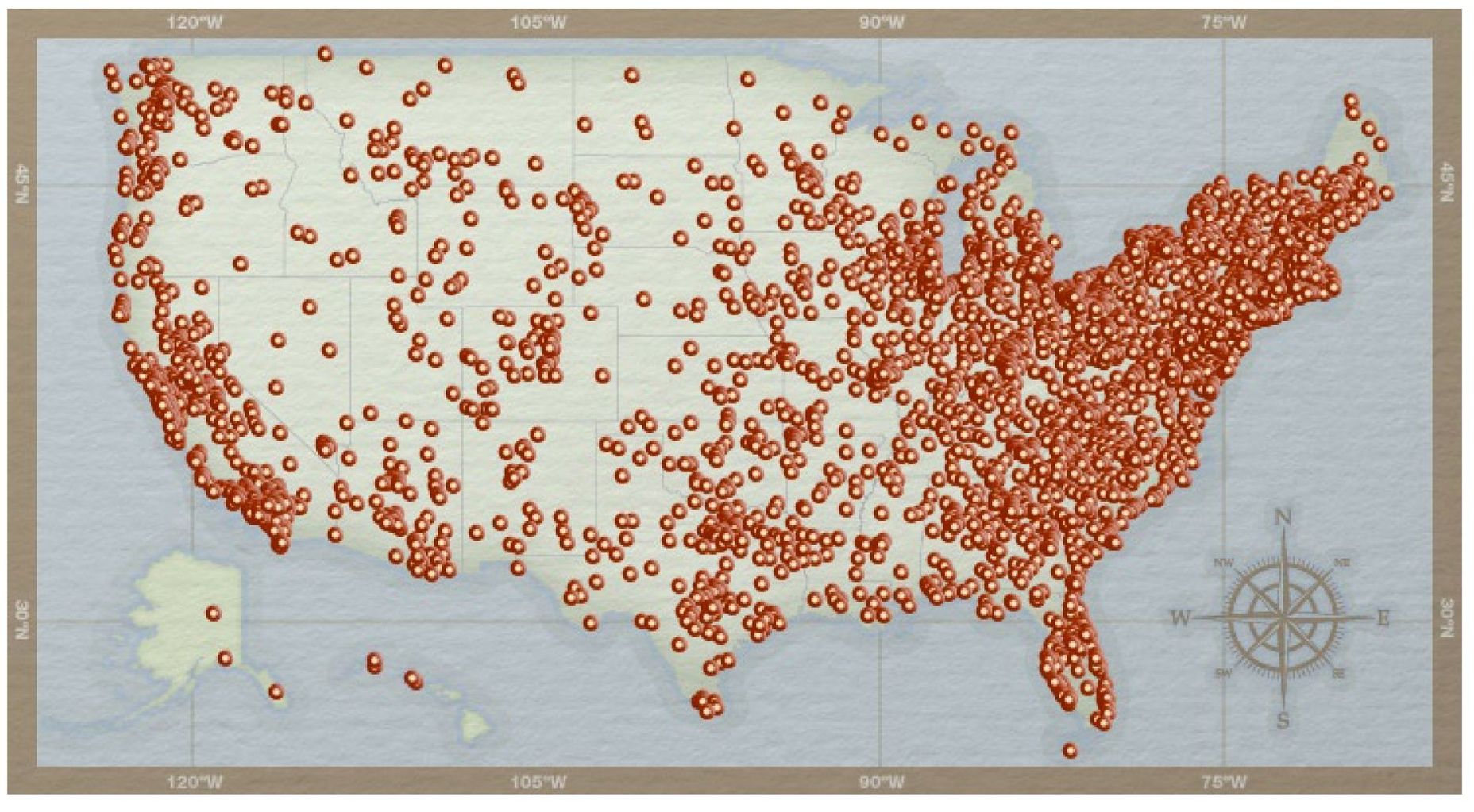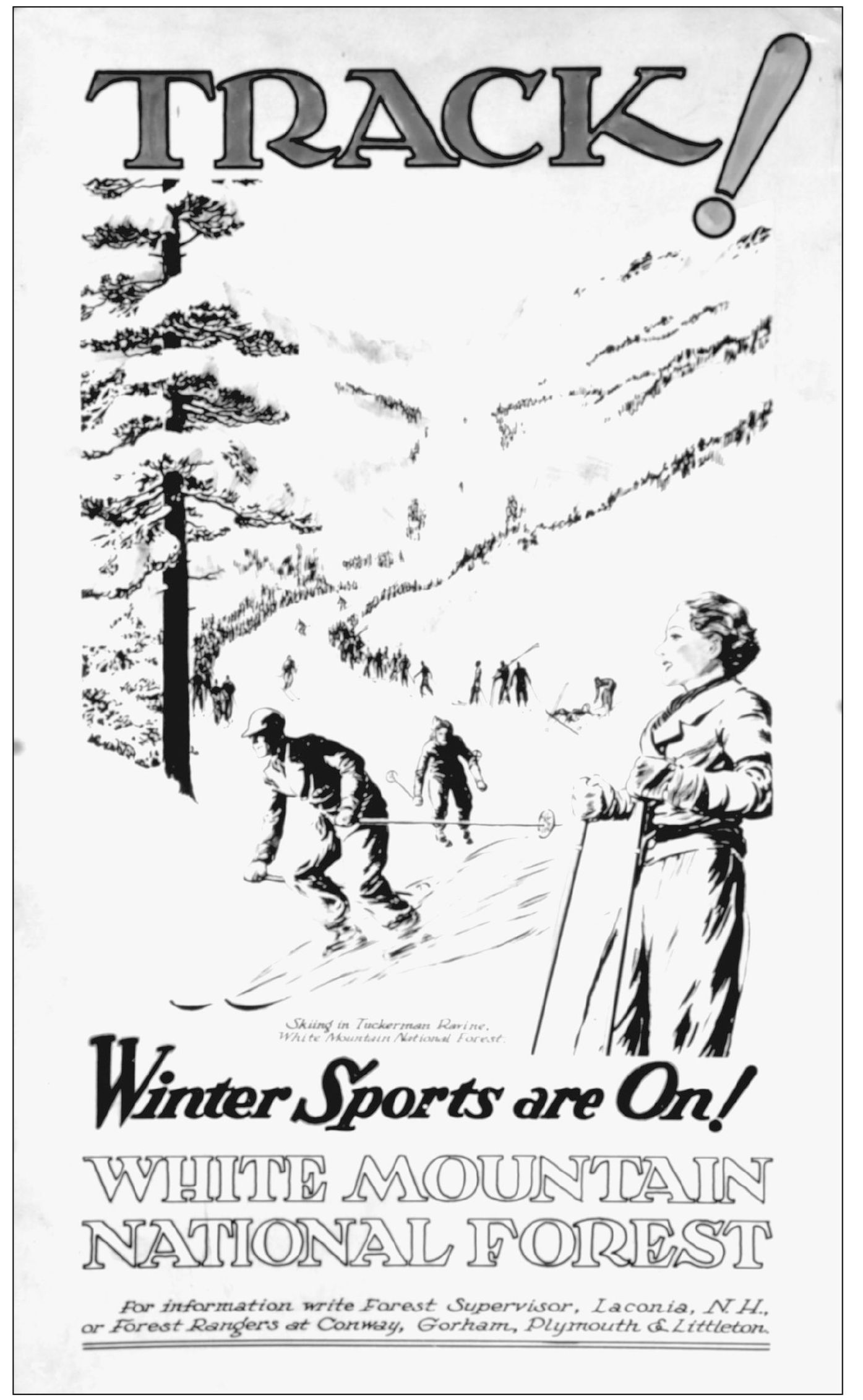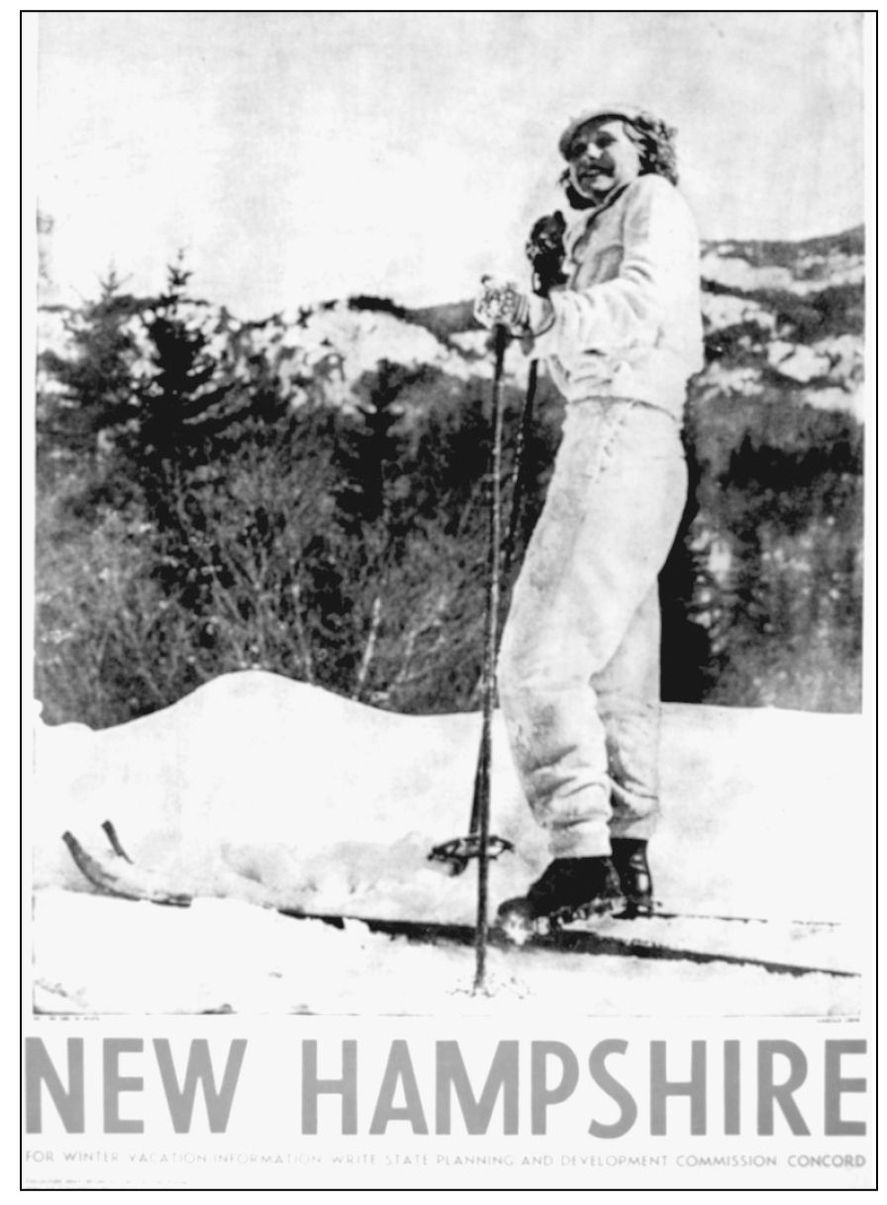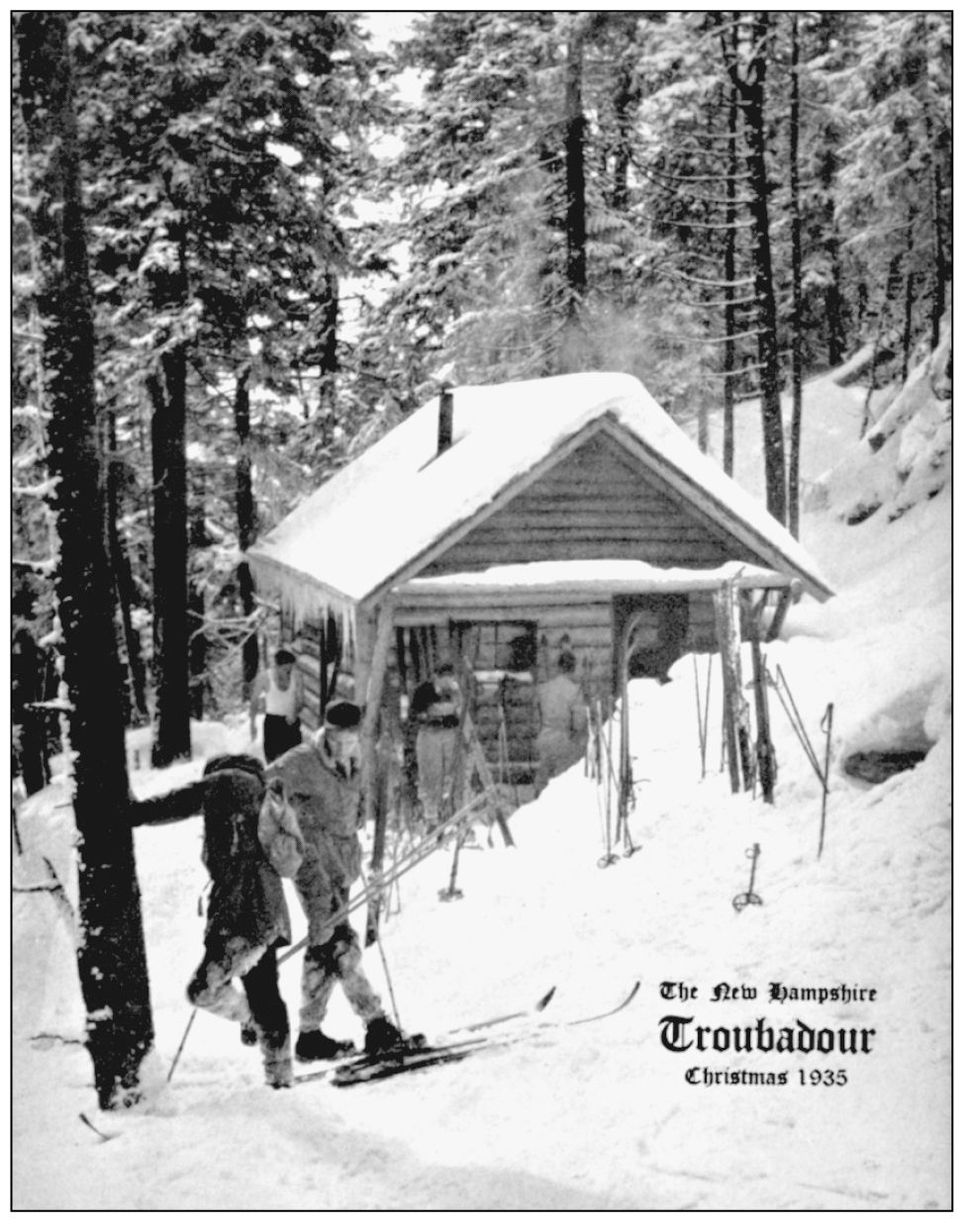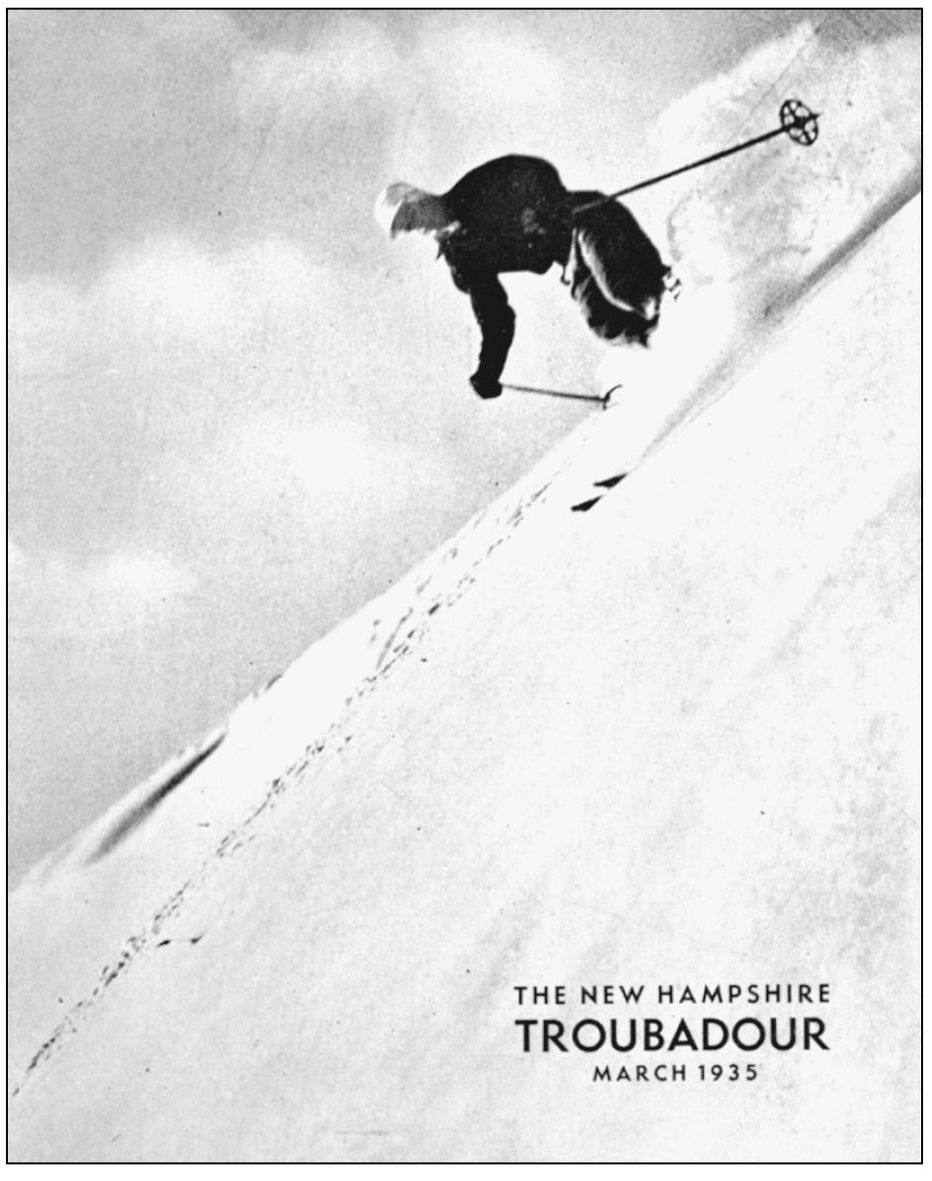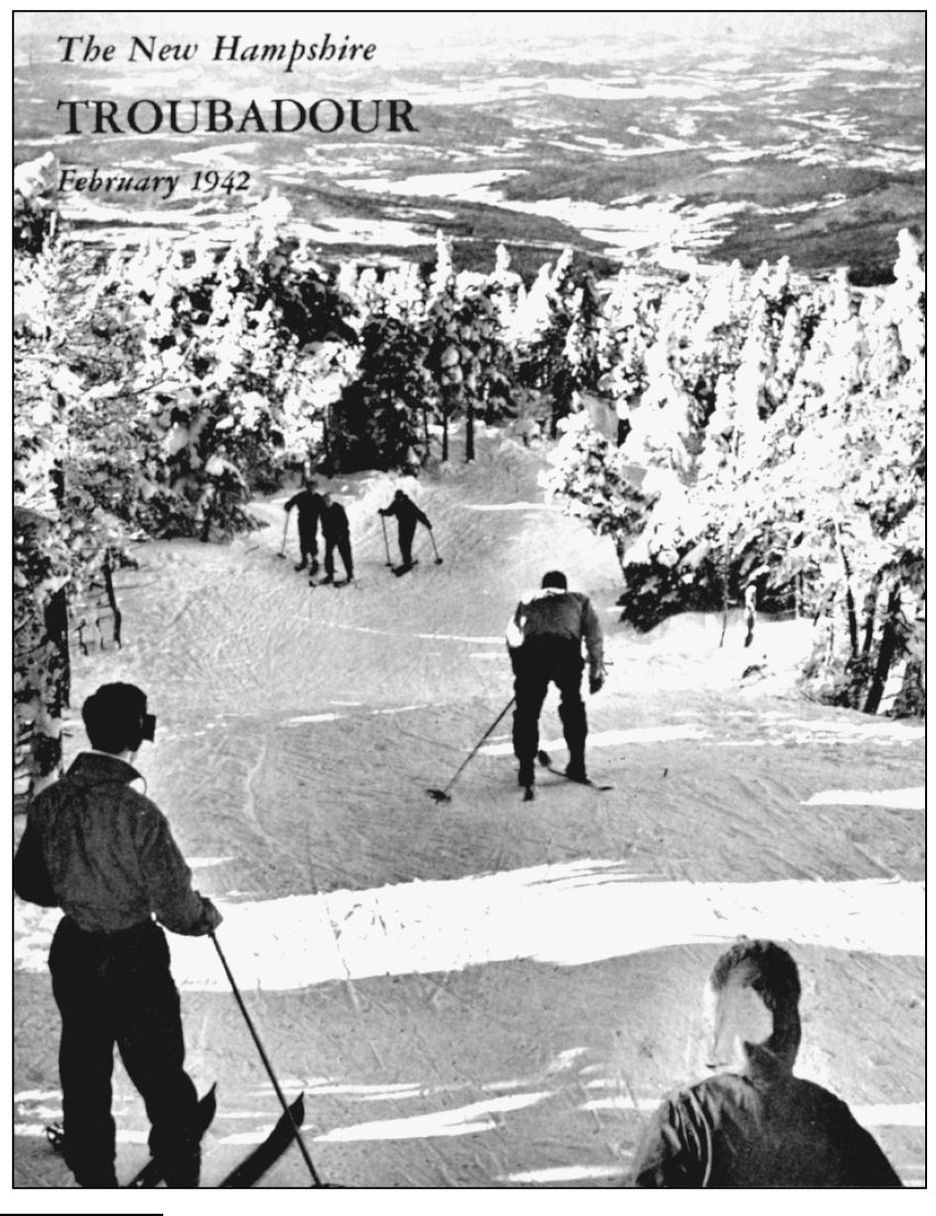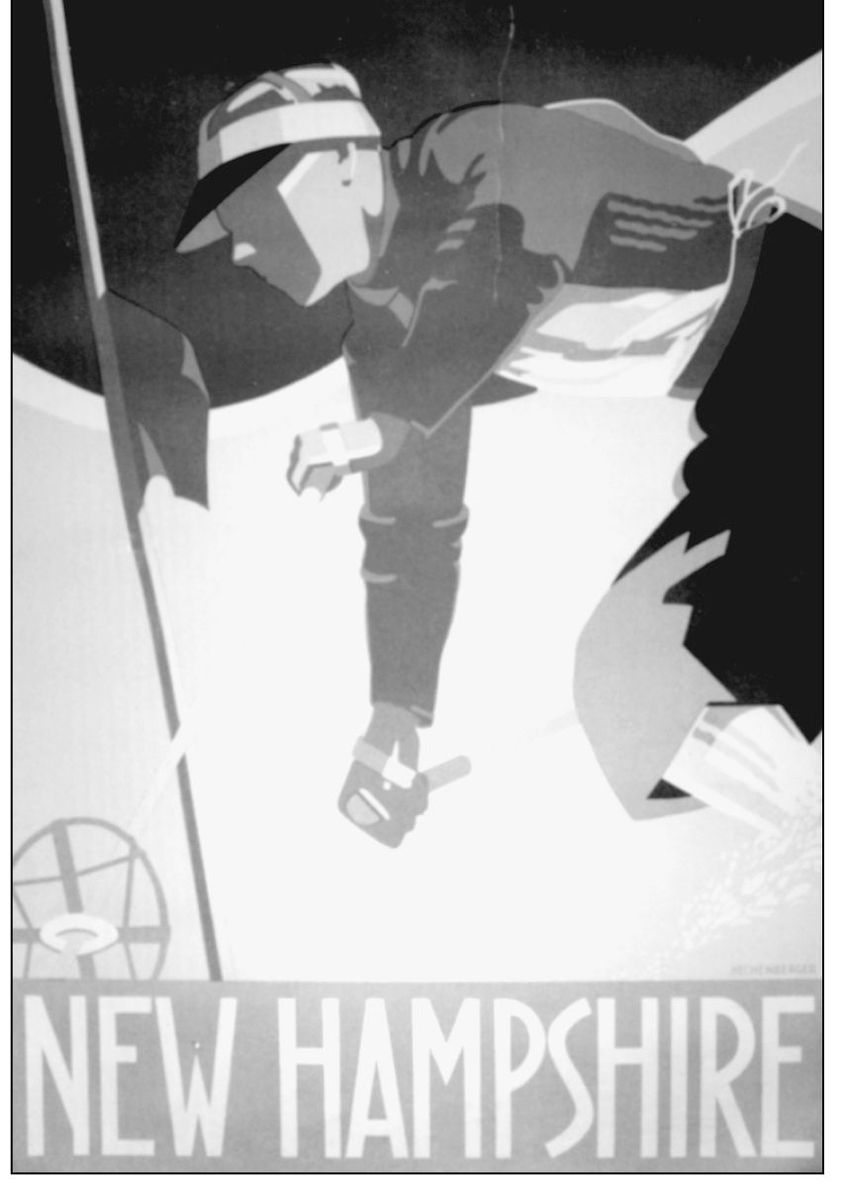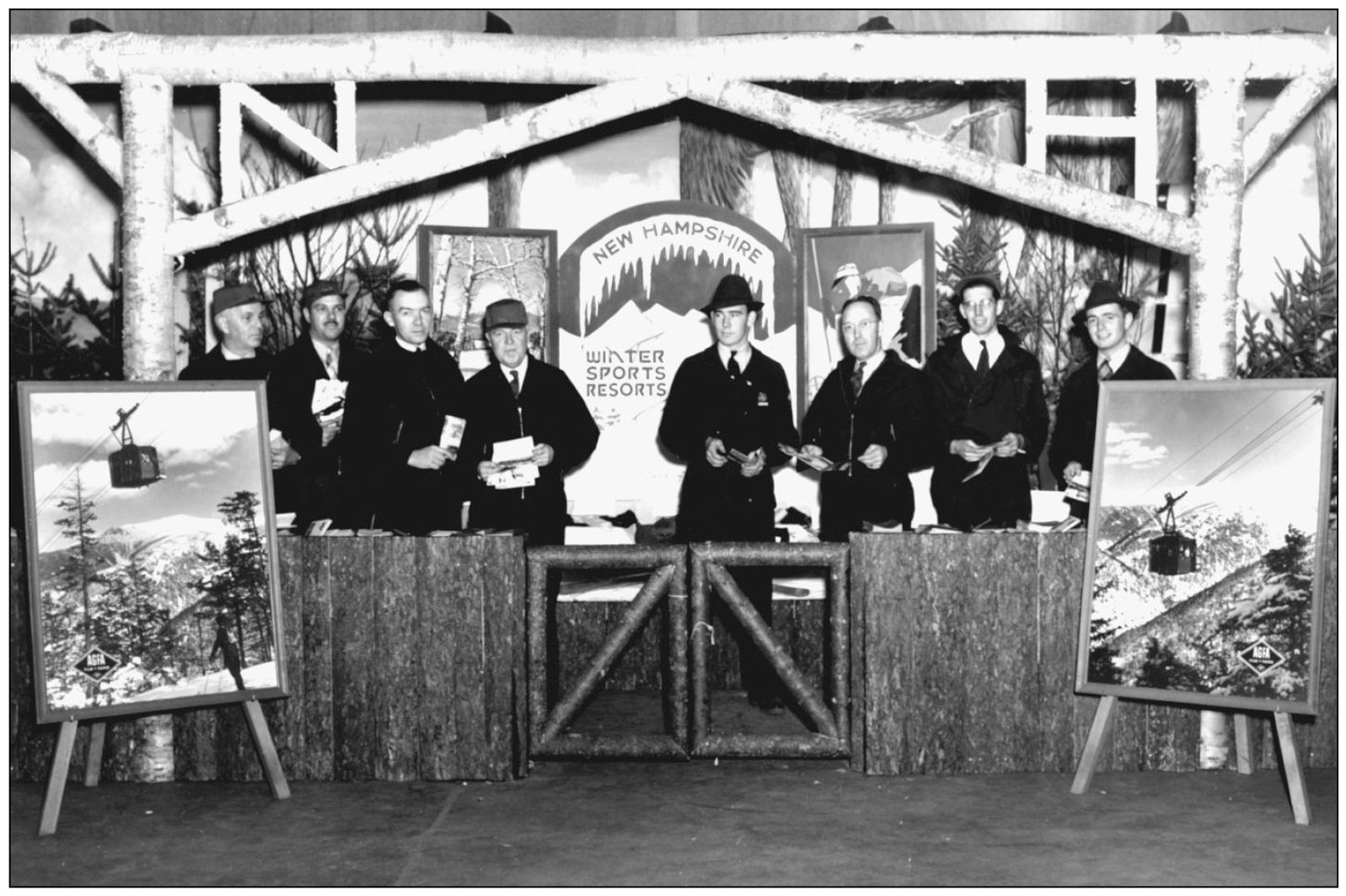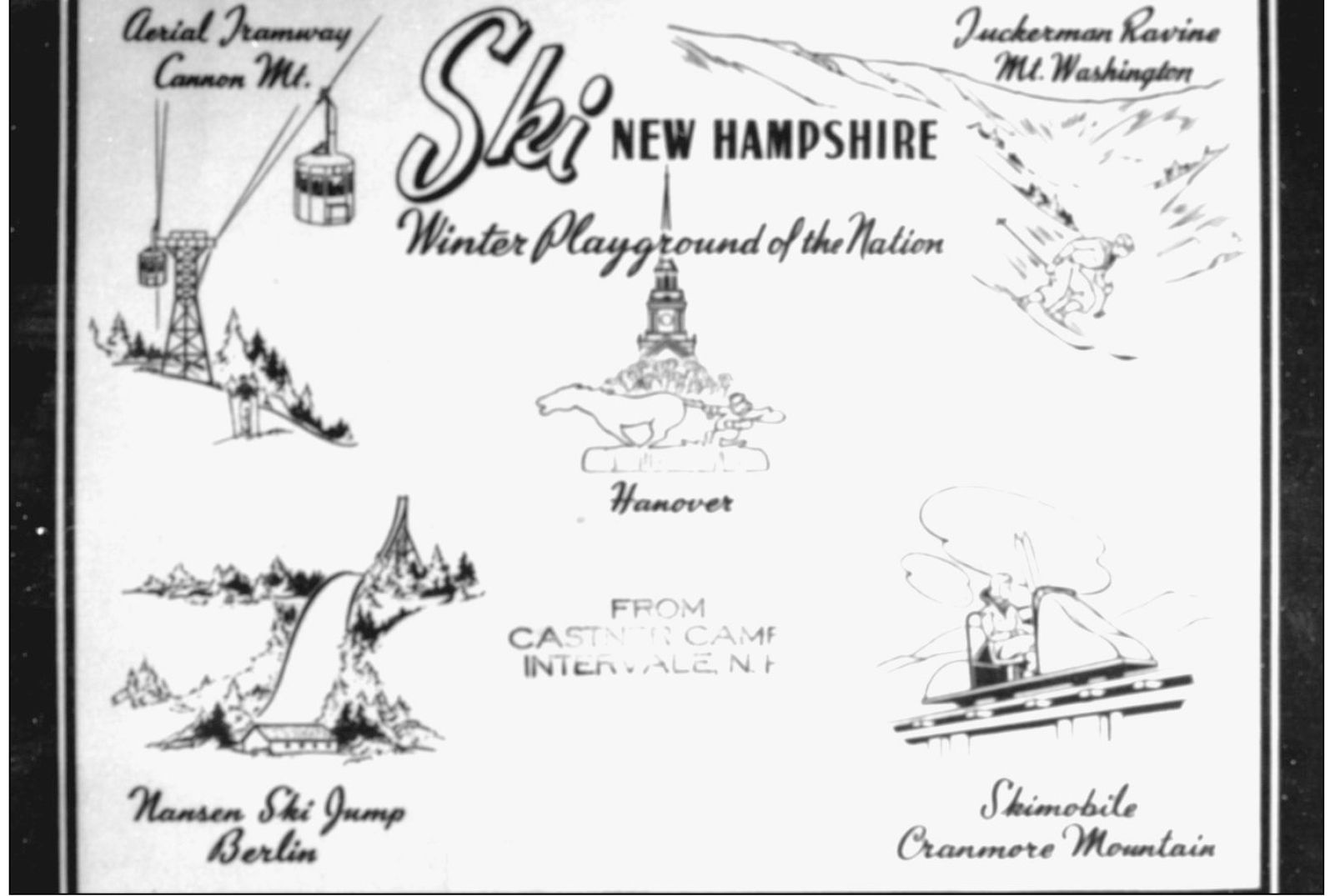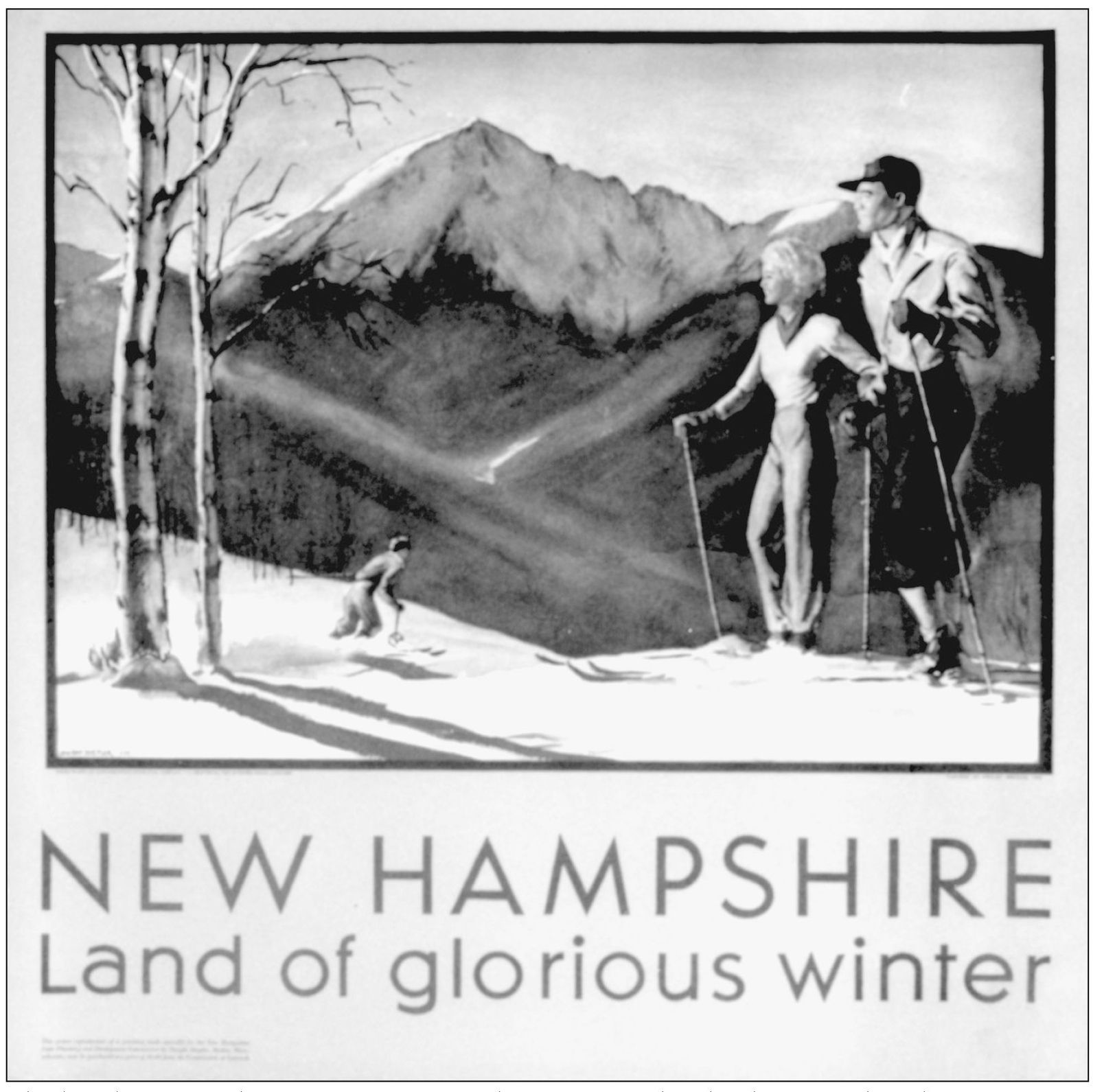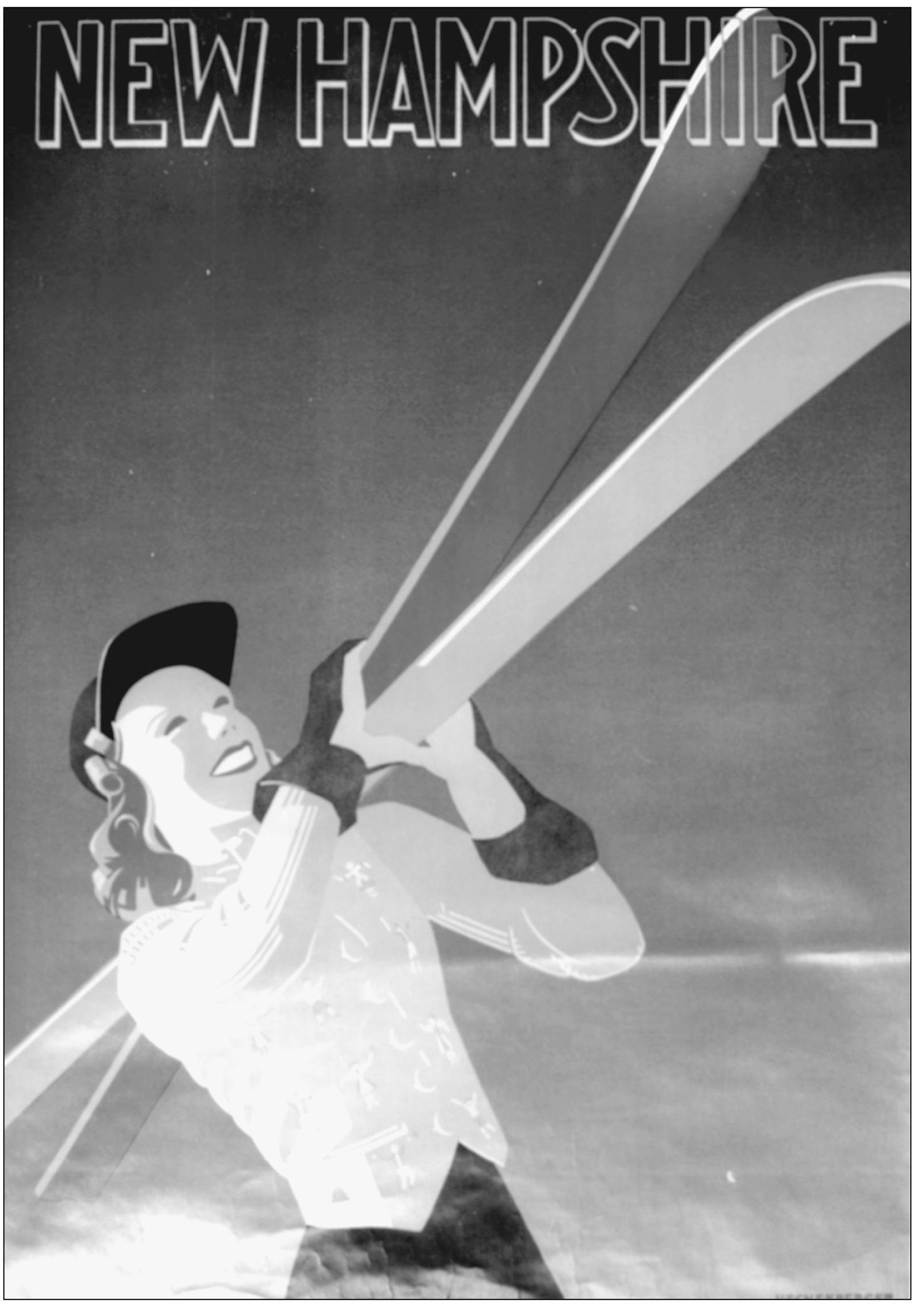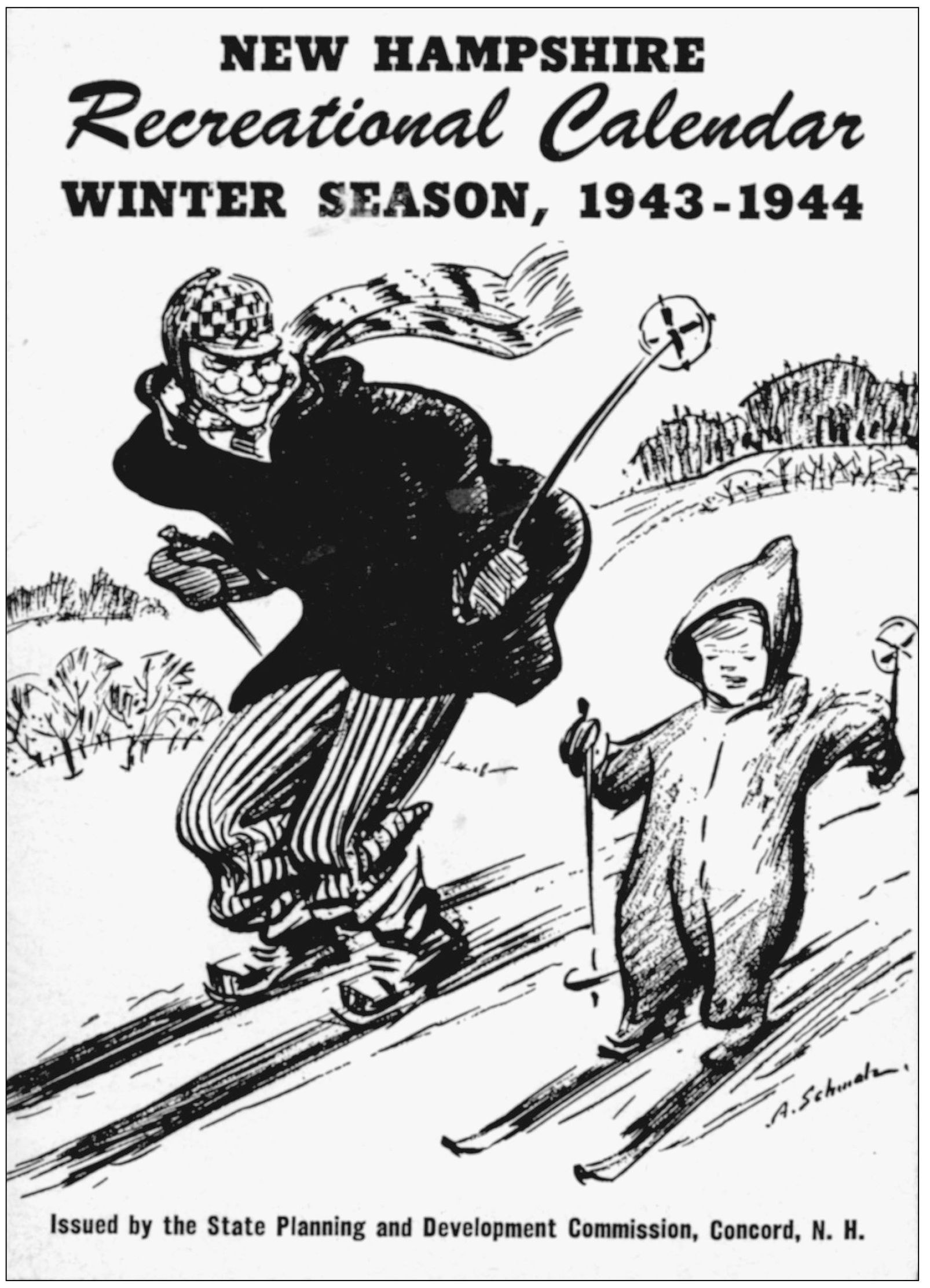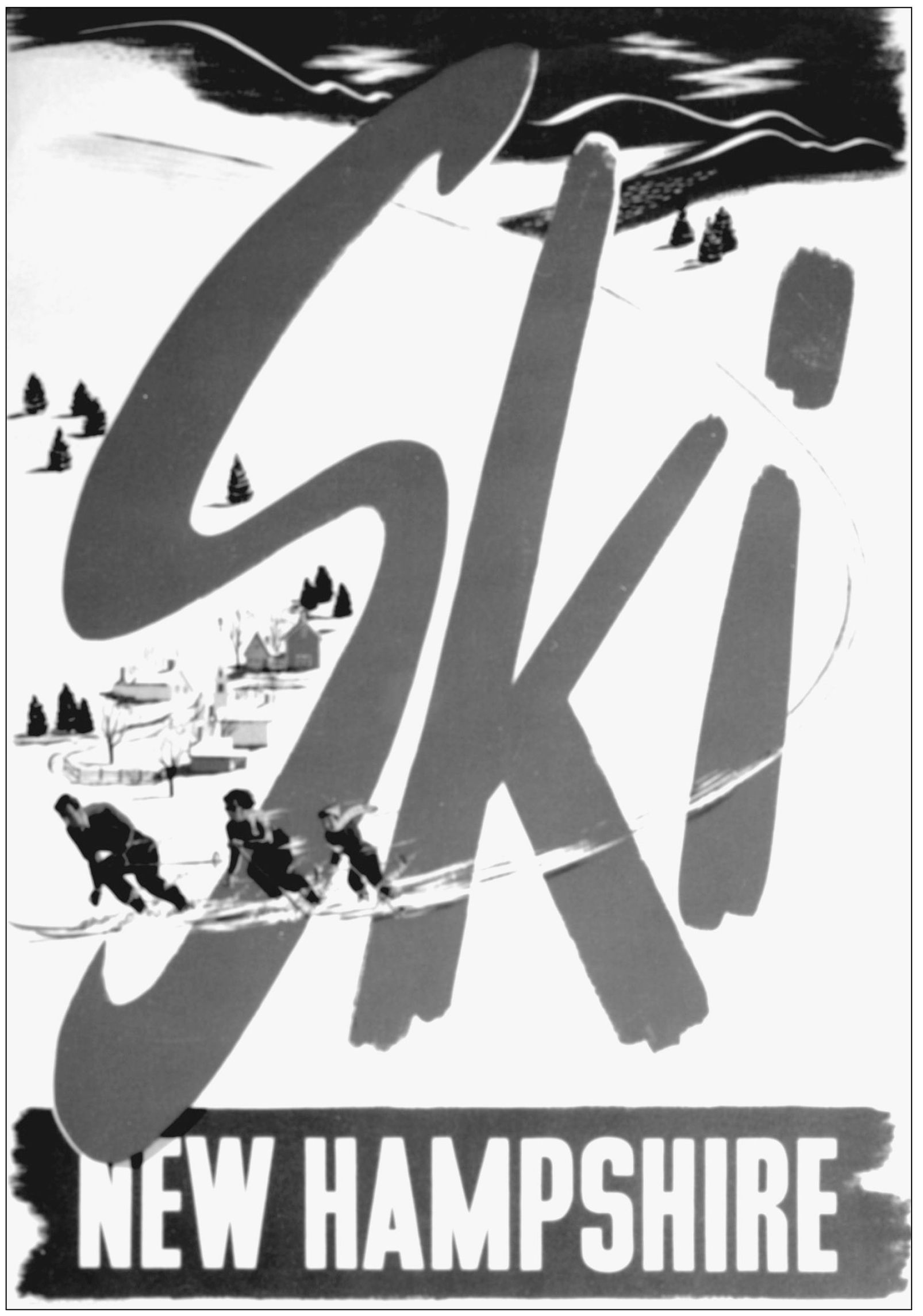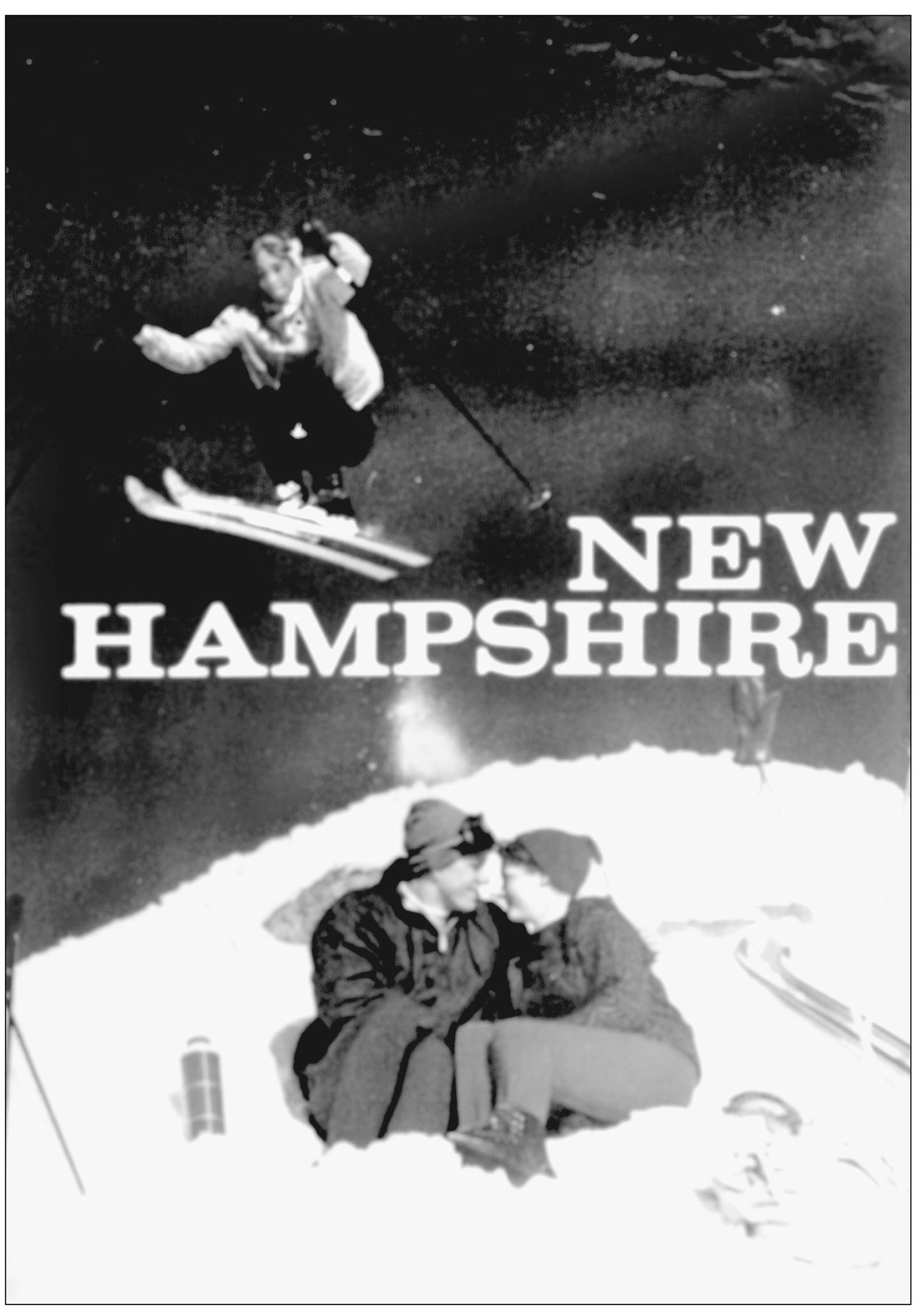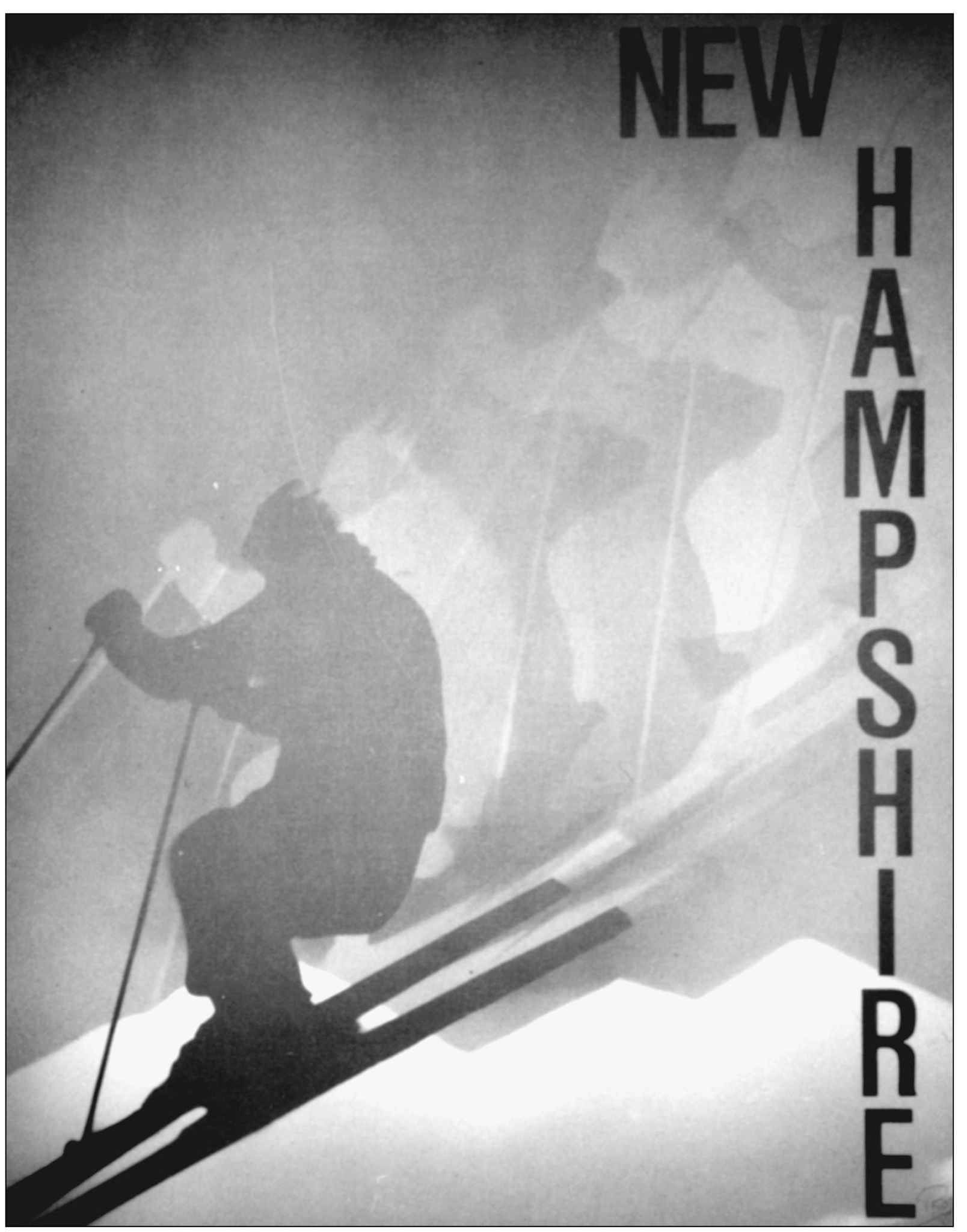One
ADVERTISING NEW HAMPSHIRE
New Hampshirea Great Out-O-Door State.
Advertisement from 1938.
Cannon Mountain capitalized on the Great Stone Face on the lift ticket, while Moose Mountain in Brookfield, now one of the lost ski areas, used a moose as a symbol.
Track! was a new expression in the 1930s. It meant Watch out, move over, I am coming through. As more people took to skiing, development grew apace in the 1930s. In the White Mountain National Forest and on other state lands, it meant much government involvement.
The State Planning and Development Commissions posters of the 1930s appealed to two different sorts of clientele. The chic lady in the latest fashions looks as if she might have stepped straight out of Saks Fifth Avenue store, which is precisely the intent. New Hampshire successfully wooed the New York ski-train crowd in the mid-1930s. The bare-chested fellows skiing the spring days away at Tuckerman let the graduated and college men know that the Bowl was the place to be on spring weekends.
The Troubadour was a small monthly magazine put out by the State Planning and Development Commission, extolling the states seasonal joys. Skiing was frequently depicted on the front cover and in articles during the winter months.
Already by the mid-1930s, the Troubadour was featuring the speed of Alpine skiing. The magazine was designed to bring city visitors to the state as well as appeal to the local speedsters, often Dartmouth collegians and graduates.
During World War II, the state continued to advertise skiing as one healthy recreation that would keep you fit to fight. A view of the Taft trail provides the cover photograph.
Stylized poster art by Hechenberger shows a slalom racer taking a gate in his best togs. Note that the flag is halfway down the pole.
The state took its skiing pleasures to Bostons Sportsmans Show in 1938. New Hampshires woodsy image was combined with its first-in-the-nation tram to advertise the rustic foundations upon which high-tech efficiency was built.
Used by various groups to advertise winter activities, these drawings show the variety of the winters attractions that might appeal to visitors in the late 1930s.
The best known of the posters promoting the state, Dwight Sheplers Land of glorious winter captures precisely the fresh outdoors freedom, the spectacular backdrop, along with the joys of social skiing to be found in New Hampshire in 1936.
Up to the 1920s, although many women had been on skis, the sport was essentially a male one. In the 1930s, however, the social side of skiing became one of the attractions, and posters began to portray the sport as healthy and great fun for women too.
While Dad might be at the front, Granddad initiates the youngest one into the thrills of speed.
After the war, family skiing was promoted. The poster indicates the picture-perfect village with comfortable inns to return to after a day of speed and thrills for Dad, Mom, and Joey.
Skiing swings into the Swinging Sixties. This poster would never be concocted today; you just do not sit on the downside of a hill. This image was designed to bring tourists north both for expert skiing and fun in the snow and sun.
By 1989, the states promotion of skiing had gone high-tech in both the depiction of the ski technique and the posters imagery.

